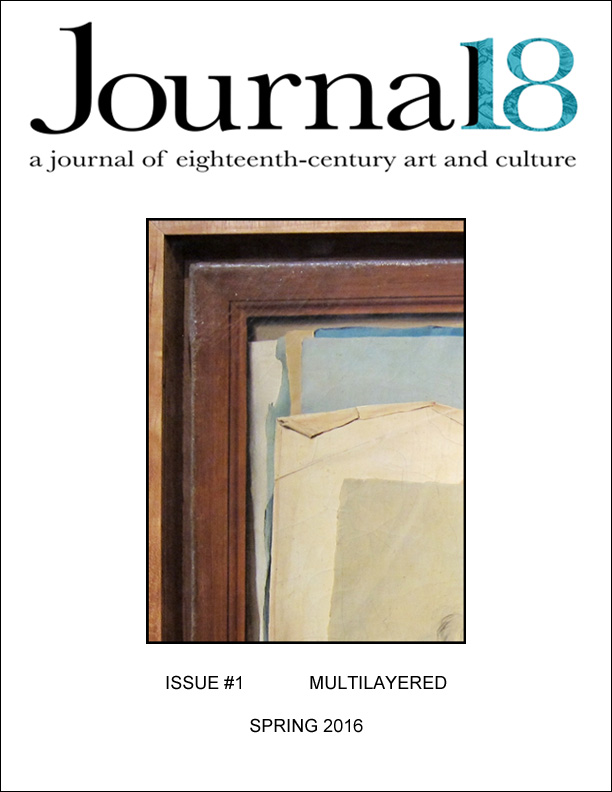Stubbs, Vernet & Boucher Share a Canvas: Workshops, Authorship & the Status of Painting
David Pullins
Scratched Surfaces: Artists’ Graffiti in Eighteenth-Century Rome
Charlotte Guichard
China and Greco-Roman Antiquity: Overture to a Study of the Vase in Eighteenth-Century France
Kristel Smentek
Marginal, Mobile, Multilayered: Painted Invitation Letters as Bazaar Objects in Early Modern India
Dipti Khera
Art history’s material turn, informed by anthropology, material culture, and consumption studies, has prompted new interest in both the physicality and the social lives of artworks. Examining the ways that eighteenth-century art objects were produced, transported, and transformed helps us to understand how they were perceived and reimagined in different cultural and temporal contexts. In the workshops and collective spaces of artistic design and manufacture, objects became the creative products of many minds and many hands, simultaneously and successively. Likewise in their afterlives as commodities and possessions, objects were continually altered through use and re-use, each transaction constituting a reframing – sometimes literal – as objects inhabited new settings or were subjected to damage, aging, or rejuvenation.
This inaugural issue of Journal18 explores the multilayered nature of eighteenth-century art. Our focus is on artworks that bear traces of multiple hands as a result of workshop production, cross-cultural exchange, re-use, restoration, vandalism, or other factors. Among the questions considered are: who were the many people involved in art’s production and reproduction (artists, collectors, scholars, dealers, handlers, and restorers)? How were eighteenth-century artworks made, re-purposed, transported, and conserved? How were they translated across media as well as across time, space, and culture? And what is the creative effect of non-creative acts like accidents or defacement? By taking a “multilayered” approach, the articles in this issue not only reexamine traditional art-historical categories – such as style, originality, or authorship – but also encourage new methodological perspectives and find new meaning in the materiality of art objects.
Issue Editors
Noémie Etienne, Getty Research Institute, Los Angeles
Meredith Martin, NYU and Institute of Fine Arts
Hannah Williams, Queen Mary University of London
Cover image: Detail of Louis-Léopold Boilly, Trompe l’œil, c. 1804-1807. Source: Wikimedia Commons.

